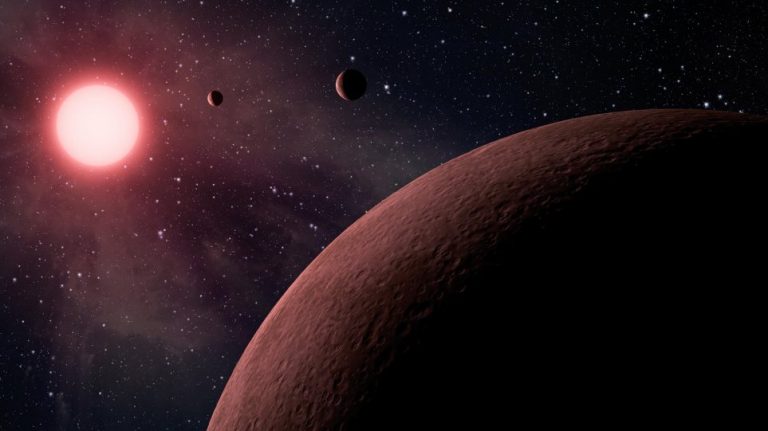TESS – aka NASA’s Transiting Exoplanet Survey Satellite – has discovered three new exoplanets that are among the smallest and nearest found to date.
They orbit a star just 73 light-years away and include a small, rocky super-Earth and two sub-Neptunes, which astronomers say may be a “missing link” in planetary formation.
They are of an intermediate size and could help determine whether small rocky planets like Earth and larger icy worlds like Neptune formed in a similar or very different way.
The system has been dubbed TOI-270 – for the 270th “TESS Object of Interest” – and it has a lot to offer, say Maximilian Günther, from the Massachusetts Institute of Technology, US, and the lead author of a paper published in the journal Nature Astronomy.
“You can really do all the things you want to do in exoplanet science with this system,” he says.
The system has a number of curious qualities, he adds, not the least being that all three planets appear to be relatively close in size.
The star itself is an M-dwarf, a type that is normally extremely active, with frequent flares and solar storms. However, TOI-270 appears to be older and to have gone a little quiet. It is giving off a steady brightness, against which scientists can measure many properties of the orbiting planets, such as their mass and atmospheric composition.
more at cosmosmagazine.com
Ask me anything
Explore related questions





